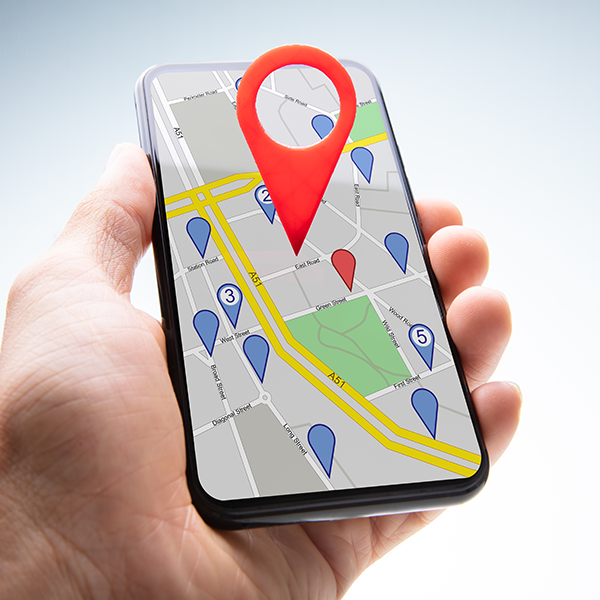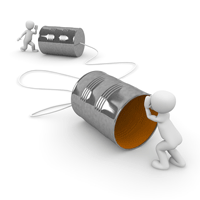Reaching the Mobile Audience throughout the Customer Journey

Today's consumers are hyper-nomadic, which is good news for retailers prepared to show up where they wander.
According to Quartz, 66 percent of U.S. tablet owners are surfing the net while watching TV, and they use this second screen to do much more than browse social media sites. In fact, as of Dec. 2014, 57 percent of consumers "multiscreened" while researching retail purchases (source: SmartInsights).
Today's customer demands that marketers implement an integrated strategy - one that doesn't track the customer journey as a straight line, but rather a series of non-linear steps that may lead to the same goal.
In its simplest form, the customer journey is the compilation of steps a customer takes when engaging a brand or company. It involves every stage of the customer lifecycle - from exploration to post-purchase communications. Consumers no longer only shop in-stores and use multiple devices to research and purchase, however, so a customer journey isn't as straightforward as before. Now, marketers should consider a complex customer journey the new norm. While multiple channels are contributing to this change, mobile has clearly become a key medium to be addressed throughout the buying cycle.
What is mobile's role in the customer journey?
Mobile's main role in the customer journey occurs during the research phase. According to Think with Google, consumers spend 15 hours a week researching products on their smartphones. Research is actually one of the most important phases - 93 percent of the respondents who researched on their mobile device went on to purchase.
Despite its prominence in the research phase, mobile plays an important role throughout the entire customer journey. Consumers are actively using their phone while in store, and are beginning to purchase on mobile more than ever. In fact, Google reports that 22 percent of U.S. consumers use their smartphones in the middle of a shopping experience to evaluate products. Additionally, consumers are interacting with email on their mobile devices more than ever. According to Yesmail's Email Marketing Compass benchmark report, in the first quarter of 2015, 45 percent of all email clicks occurred on a mobile device and mobile revenue accounted for 22 percent of all email-driven revenue.
While mobile isn't the only device affecting the customer journey, it's imperative that marketers understand the most effective way to leverage the device.
How can marketers take advantage of mobile?
Create a customer journey map
Understanding and adapting to the customer lifecycle is complicated. Customers are not always in a position to purchase, so knowing when and how to can reach them is necessary. No matter what stage of the customer lifecycle, mobile offers great opportunities for marketers to engage with consumers.
Incorporating mobile into the customer journey allows marketers to interact with their customers throughout the entire lifecycle. Marketers can optimize the mobile experience to engage customers who aren't in a position to purchase with push notifications and company updates, create a mobile loyalty program to incentivize follow-up purchases and offer local discounts with geographic targeting while customers are already shopping.
Take advantage of cross-device conversion tracking
According to Digiday, cross-device conversion tracking allows companies to identify Internet users across smartphones, tablets and desktops to understand consumers and allow businesses to improve retargeting practices. This is essential for reaching consumers with consistent messaging, regardless of their current device.
One way marketers can take advantage of mobile tracking is to require a login for mobile applications and websites. This will help marketers understand consumer behaviors to make better marketing decisions. What is a consumer using their smartphone for? What do consumers do on a mobile app? By answering these questions, marketers can send multiple messages that reach consumers on their preferred device. For example, marketers can deploy a teaser for an upcoming promotion using their mobile app, a banner advertisement on a desktop reminding the consumer of the sale, and finally a separate advertisement encouraging the purchase on a consumer's iPad.
Reach consumers in the research phase
Mobile's role in the customer purchase journey is vital to the success of a business. According to CMO, 80 percent of mobile users' purchasing decisions are influenced by the mobile channel.
Marketers can maximize their sales by meeting customers during the research phase of their customer lifecycle and motivating them to purchase on the spot. To do so, companies must optimize their website for the mobile device using responsive design. And since Google rewards mobile-friendly websites by ranking them higher in mobile search, companies that make their websites mobile-friendly have the opportunity to reach researching consumers with relevant information that will inspire a purchase.
Conclusion
The customer journey is no longer limited to an in-store or online purchase. Consumers use multiple devices to shop online and in-store, and they do so simultaneously. While mobile isn't the only device changing the customer journey, it's a major player. By implementing these three best-practices, marketers can take advantage of the "new age" consumer, and meet them on every channel throughout the customer lifecycle.
Subscribe to Our Newsletter!
Latest in Mobile Marketing










